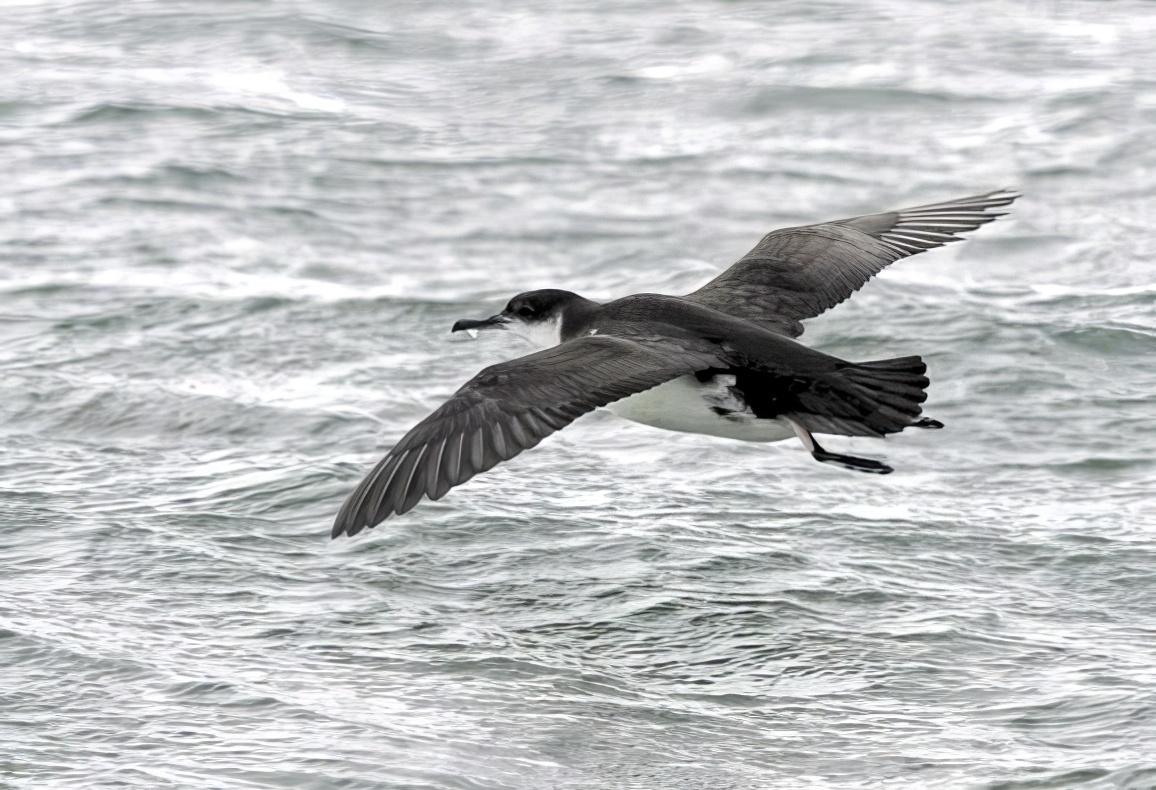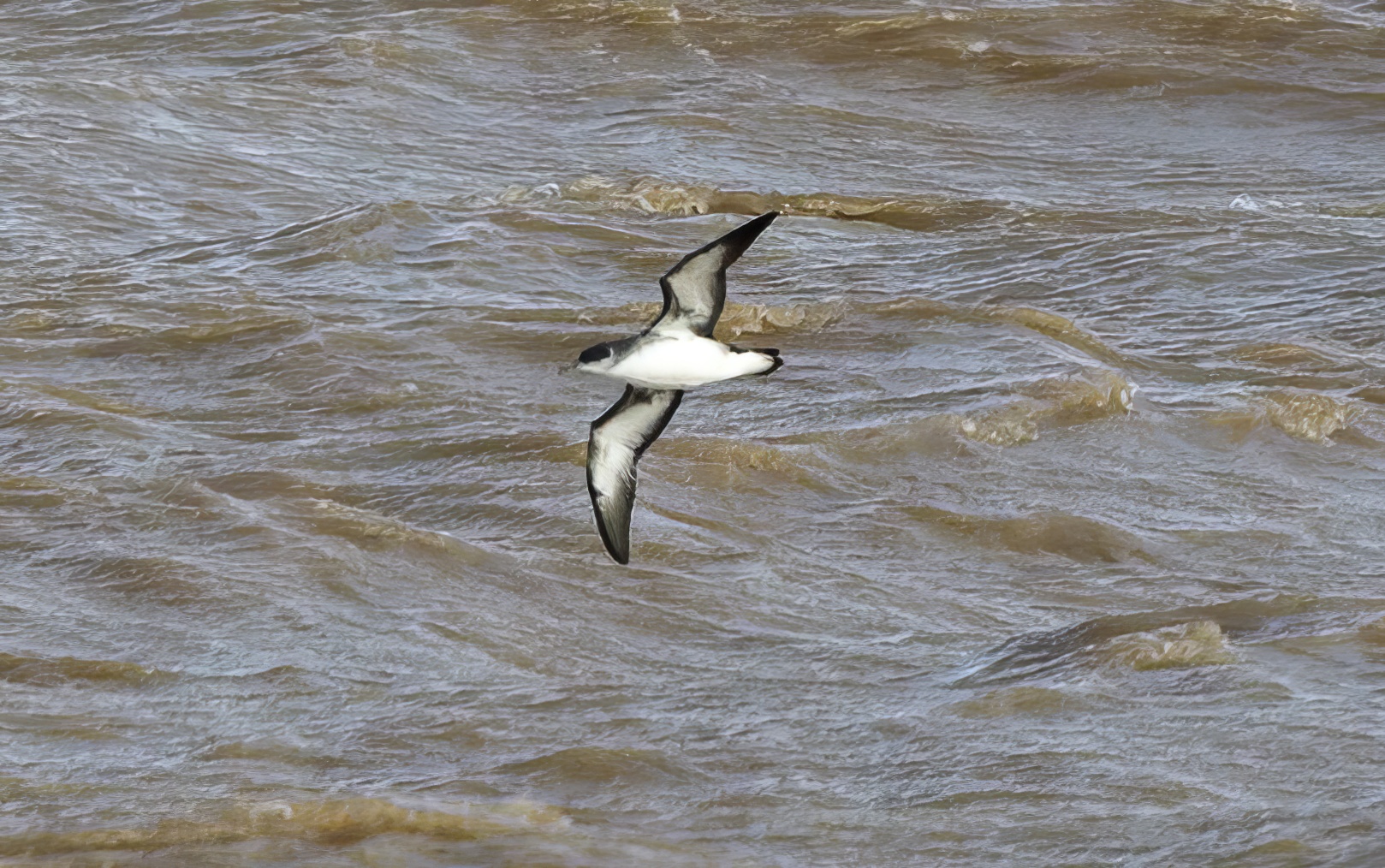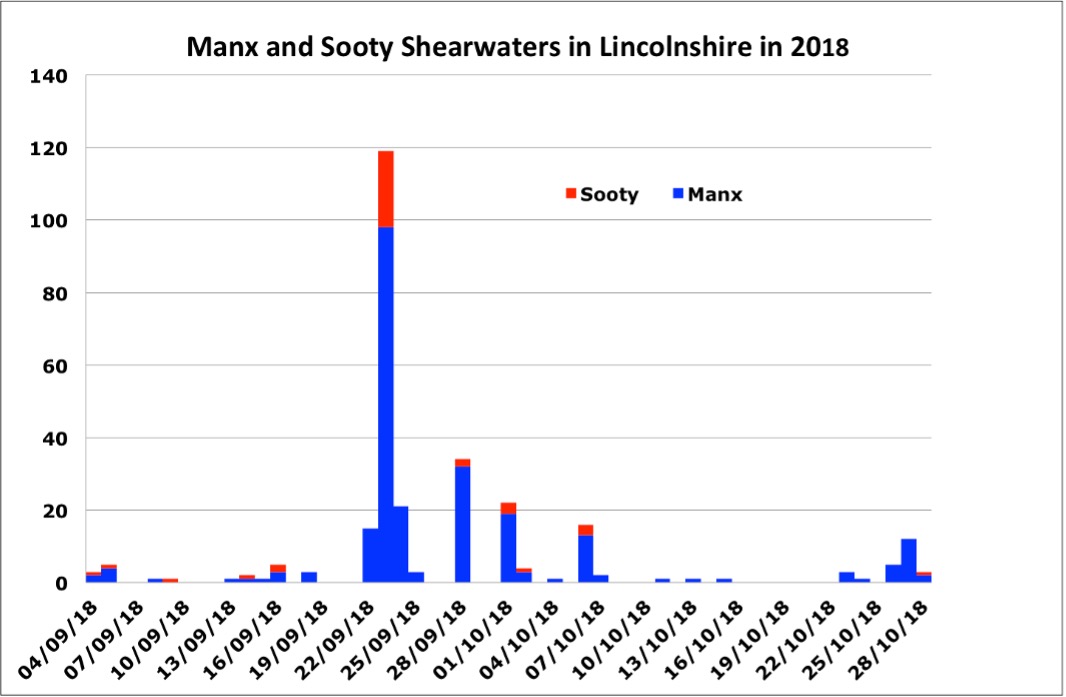Manx Shearwater Puffinus puffinus
Scarce/fairly common offshore visitor/passage migrant, April-November with most September. Occasional inland records after south-westerly gales.


Most of the world population of 400,000 Manx Shearwaters breed around the British Isles and 90% of those breed on the Scottish Island of Rhum and islands off the Pembrokeshire coast. Very few breed in the Scottish North Sea and none in the England. Remarkably few are seen off Lincolnshire. The Atlas reported yearly totals of usually less than 200 but with a spectacular movement in 1989 when 1,200 were recorded. In the five years to 2018, LBR reports showed an annual monthly peak counts total of around 110 with a range from 29 in 2015 to a high of 225 in 2014. Records occur in small numbers from April-July with peak passage in August-September. The largest day counts in the five years to 2018 were both at Gibraltar Point with 182 north on August 18th, 2014 and 76 on September 23rd, 2018, and the county day total was 98, when there were also 21 Sooty Shearwaters past Gibraltar Point (chart). Passage falls away in October and is usually over by early November. The British population winters in the South Atlantic off South America and can wander anywhere in the southern oceans from December-March.

(Account as per new Birds of Lincolnshire (2021), included September 2022)
